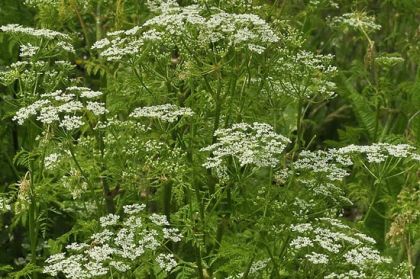This is a highly poisonous, hairless biennial that is frequently found on riverbanks, motorways, laneways and grassy places, particularly in the lower half of the country. At times reaching over 2 metres high, Hemlock bears its small white flowers (2-4cm across) in umbels of 10-20 rays in June and July. The leaves are very pretty, long-stalked and up to 4 times divided into fine, feathery leaflets. These leaves are of a lighter shade of green than those of Cow Parsley, a plant which is quite similar in many ways to Hemlock. Another difference is that the Cow Parsley flowers a little earlier than Hemlock. The major difference, however, is that the stem of Hemlock, which is hollow, is covered with purple blotches. The plant also has an unpleasant smell. This is a native wildflower and it belongs to the family Apiaceae.
I first identified this plant at Wellingtonbridge, Co Wexford in 2009 when I also photographed it.
If you are satisfied you have correctly identified this plant, please submit your sighting to the National Biodiversity Data Centre




